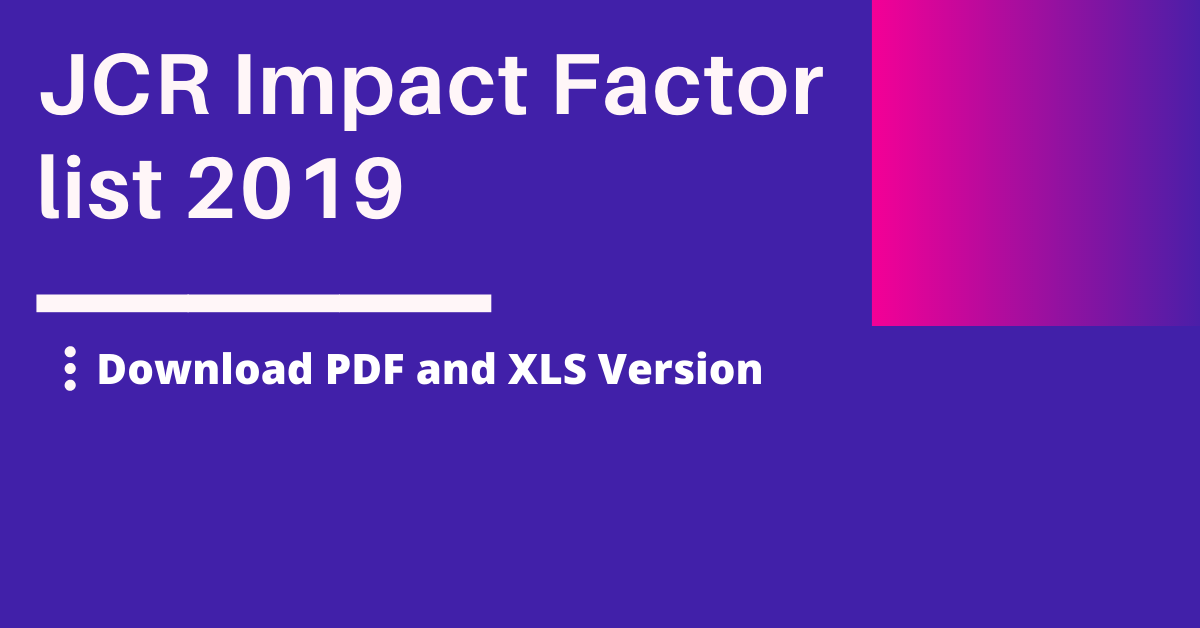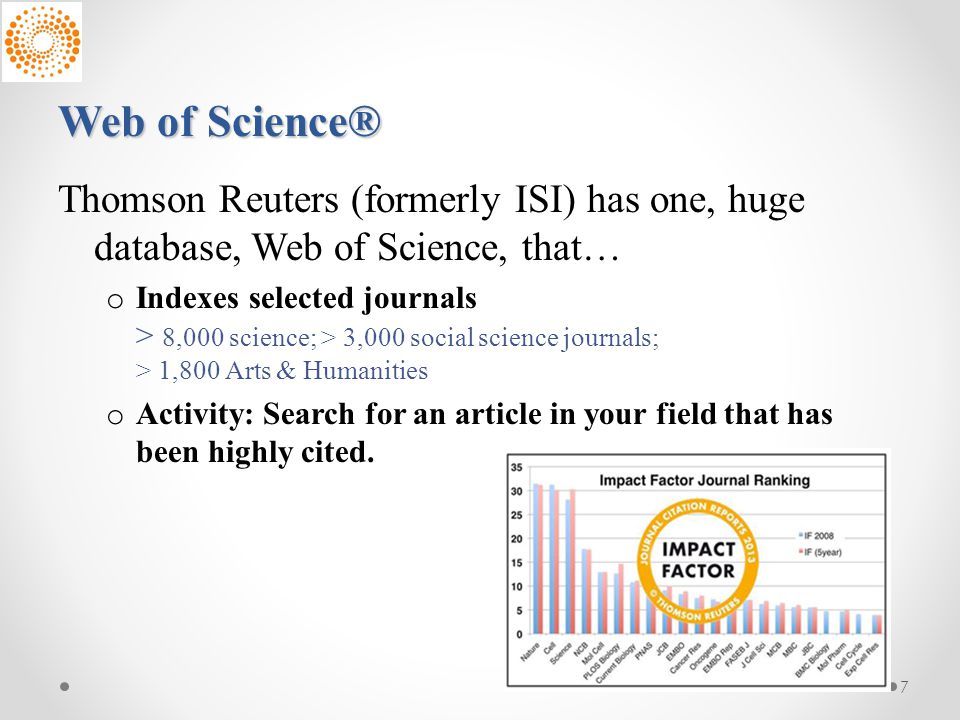Thomson Reuters Web Of Science Impact Factor

Isi was acquired by thomson scientific healthcare in 1992 and became known as thomson isi.
Thomson reuters web of science impact factor. It contains over 12000 journals. Impact factors are calculated yearly starting from 1975 for journals listed in the journal citation reports jcr. Curated with care by an expert team of in house. Thus the impact factor of a journal is calculated by dividing the number of current year citations to the source items published in that journal during the previous two years see figure 1.
Here is the latest impact factor list of 2019 provided by the journal citation report jcr. Web of science does not depend on the journal impact factor alone in assessing the usefulness of a journal and neither should anyone else. The 2020 edition of the journal citation reports jcr published by clarivate analytics provides a combination of impact and influence metrics from 2019 web of science source data. Browse search and explore journals indexed in the web of science.
The master journal list is an invaluable tool to help you to find the right journal for your needs across multiple indices hosted on the web of science platform. Impact factors thomson reuters. This measure provides a ratio of citations to a journal in a given year to the citable items in the prior two years. The impact factor was devised by eugene garfield the founder of the institute for scientific information isi.
The annual jcr impact factor is a ratio between citations and recent citable items published. We would like to show you a description here but the site won t allow us. Journal impact factor list 2019. Thomson reuters institute s legal department operations index shows a 24 percent increase in dedicated operations staff use of outside counsel technology on the rise due to covid 19.
Jcr was earlier published as science citation index and now it is published by clarivate analytics a web of science group.


















